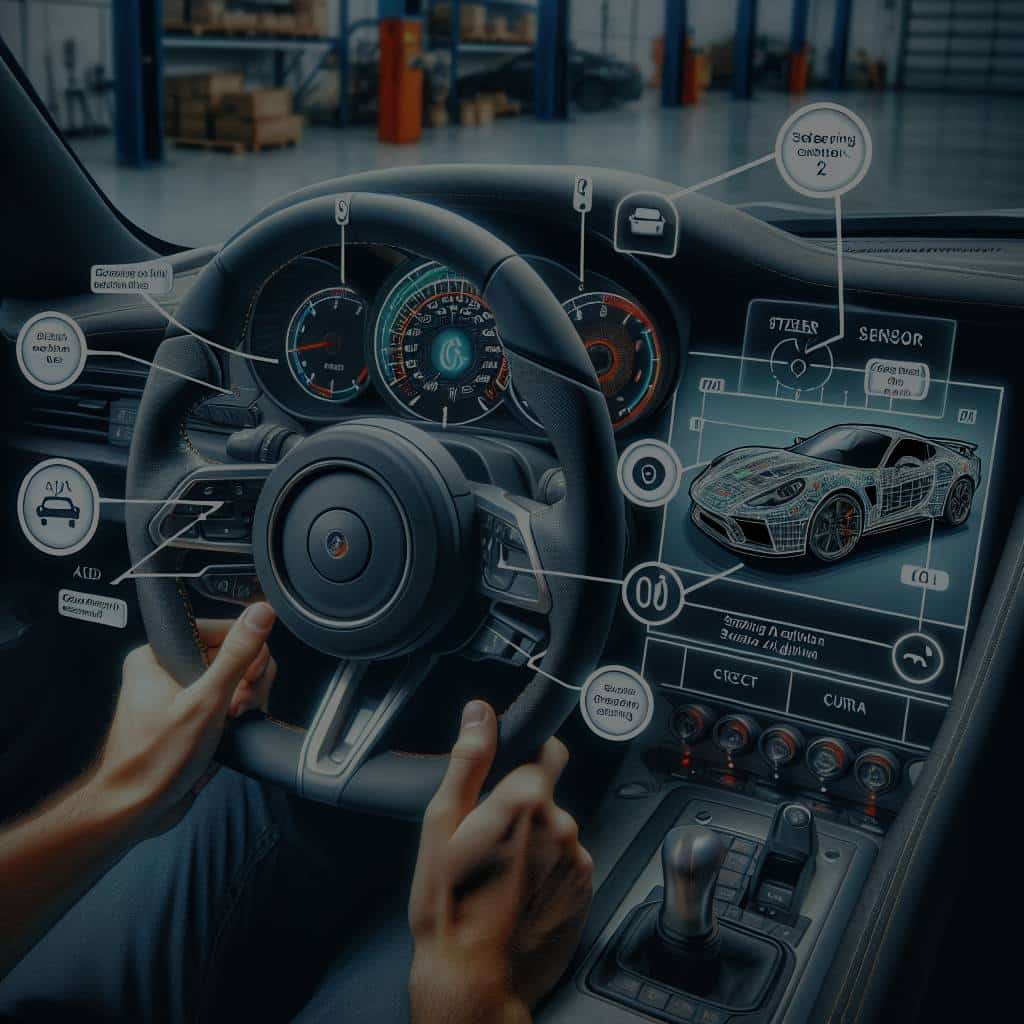How to Calibrate the Steering Angle Sensor in a BMW M3 After Alignment?

Welcome to the essential guide on how to calibrate the steering angle sensor in a BMW M3 after alignment. Whether you are an auto mechanic, a car enthusiast, or an ordinary driver, this guide will provide invaluable knowledge on maintaining optimal car performance. In this article, we will delve into the critical process of calibrating the steering angle sensor, particularly after performing a wheel alignment. We will explore the functionality of the steering angle sensor, its location, and the step-by-step guide on how to calibrate it using the iTrader app.
Furthermore, we will discuss the importance of keeping your BMW M3 steering wheel straight and aligned, why it is essential to calibrate the sensor, and the complications that might arise if it is not done correctly. Expect to gain a practical understanding of how to keep your BMW in peak condition.
Sujet a lire : Can You Reduce Brake Dust on an Audi Q7 with Ceramic Brake Pads?
The Importance of the Steering Angle Sensor in a BMW M3
To begin with, it’s crucial to understand the pivotal role that the steering angle sensor plays in your vehicle. Originally posted as a safety feature in high-end cars, the steering angle sensor is now standard in almost all vehicles, including your BMW M3. This sensor is a critical part of the car’s advanced control system, providing data about the angle of the steering wheel and how fast it is turning.
The steering angle sensor is particularly vital in cars with stability control and anti-lock braking systems (ABS). It provides the necessary data to these systems, allowing them to function optimally. If the sensor is not calibrated correctly, it could lead to the malfunctioning of these systems, compromising your safety.
Avez-vous vu cela : How to Choose the Right Motorcycle Gloves for Both Safety and Comfort?
Location of the Steering Angle Sensor in a BMW M3
Knowing the location of the steering angle sensor in your BMW M3 is the first step to calibrating it. The sensor is typically located in the steering column, behind the steering wheel. However, the exact location may vary depending on the model and production year of the vehicle.
To locate the sensor, check the vehicle’s manual or consult an expert. Once you’ve identified the sensor, it’s time to move on to the calibration process. Keep in mind that the sensor is a delicate component, so handle it with care to avoid damage.
How to Calibrate the Steering Angle Sensor After Alignment?
After having your BMW M3’s wheels aligned, you need to calibrate the steering angle sensor. You might be wondering why. When the wheel alignment is adjusted, the steering wheel’s straight ahead position might change. The sensor needs to be recalibrated to recognize this new "straight ahead" position. This is where the iTrader app comes in handy.
The iTrader app is a powerful tool that can facilitate the calibration process. Here’s a step-by-step guide:
- Start the car and let it run for a few minutes.
- Open the iTrader app on your device and connect it to the car’s onboard diagnostic port.
- In the app, choose the ‘Steering Angle Sensor Calibration’ option.
- Follow the on-screen instructions until the process is complete.
Remember, calibrating the sensor is not a one-time activity. It should be done every time the wheel alignment is adjusted to ensure the car drives straight and the stability control and ABS work correctly.
Possible Complications if the Steering Angle Sensor is not Calibrated Correctly
If the steering angle sensor is not calibrated correctly, it can lead to various issues that affect the car’s performance and safety. For instance, the ABS and stability control system might not function properly, leading to unpredictable car behavior, especially in emergency situations.
It is also possible that the steering wheel might not return to the center position after making a turn. The car might also pull to one side when you’re driving straight, which can be very dangerous.
To avoid these complications, it is highly recommended to calibrate the sensor correctly. Don’t ignore any warning signs such as the ABS or stability control warning light on the dashboard. If you notice any irregular car behavior, seek professional help immediately.
Importance of Regular Posts and Updates on Your iTrader App
One of the benefits of using the iTrader app to calibrate your BMW M3’s steering angle sensor is the regular updates and posts on the platform. These posts can keep you informed about any changes or advancements in the calibration process.
By joining the iTrader community, you can also connect with other BMW owners and enthusiasts. You can share your experiences, get advice, and learn from others. The iTrader rep posts are particularly helpful, as they provide insights from experts in the field.
Remember, maintaining your BMW M3 does not stop at regular car servicing. It extends to understanding and appreciating the importance of specific elements like the steering angle sensor. Regularly updating and calibrating this sensor after wheel alignment can significantly enhance your BMW M3’s driving experience. So, take the wheel with confidence and enjoy the ride.
Troubleshooting Common Steering Angle Sensor Issues
Problems with the steering angle sensor in your BMW M3 can be frustrating. Thankfully, there are a few common issues that can be addressed with some basic troubleshooting. The first thing to do is determine if the problem lies with the sensor itself or with its calibration.
If the steering wheel feels loose or wobbly, it might be an issue with the sensor. A loose sensor can cause the steering wheel to behave erratically, which can be dangerous. If this is the case, you might need to replace the sensor.
On the other hand, if the issue is that the car doesn’t drive straight, or the ABS and stability control systems are not working correctly, it might indicate that the sensor needs recalibration. This is often the case after a wheel alignment.
The iTrader app has a handy troubleshooting guide that can help you diagnose the problem. Just select the ‘Troubleshooting’ option in the app and follow the prompts. Remember to handle the delicate sensor with care during the process.
Conclusion: Keeping Your BMW M3 in Top Condition
To wrap it up, the steering angle sensor is a vital component of your BMW M3. It plays a crucial role in the functionality of the car’s advanced control systems, like the ABS and stability control. Regular calibration of this sensor, especially after a wheel alignment, is essential in maintaining optimal car performance and ensuring your safety on the road.
Note that the calibration process is straightforward with the iTrader app. This tool not only facilitates the calibration but also offers valuable updates and posts concerning any advancements in the process. It’s also a platform to connect with other BMW enthusiasts.
In conclusion, understanding the importance of the steering angle sensor and keeping it well calibrated will hugely benefit your BMW M3 driving experience. Appreciating these seemingly small but significant aspects of your vehicle can make a world of difference.
So, next time you set your steering wheel straight after a wheel alignment, remember to calibrate the sensor. Take heed of any warning signs and don’t hesitate to seek professional help if needed. With these tips, your BMW M3 is set to deliver its best performance. Drive safe and enjoy the ride!
